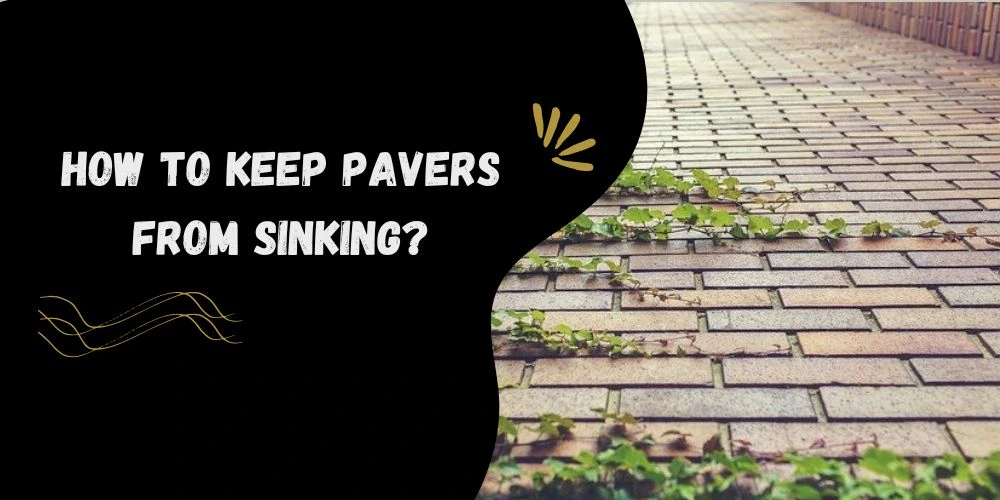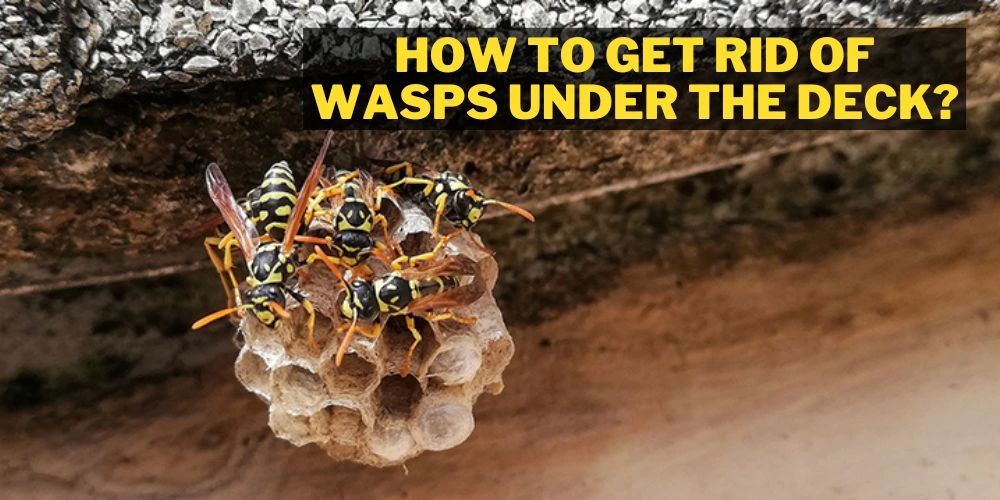Matted down grass can occur for a variety of reasons. One common cause is heavy foot traffic, which can compress the soil and cause the grass to become flattened. Another cause is exposure to prolonged periods of moisture or humidity, which can cause the grass blades to stick together and become matted down.
Additionally, mowing the grass too short can cause the blades to be more easily flattened. Other factors, such as excessive thatch buildup, fungal diseases, or insect infestations, can also lead to matted down grass. So, how to fix matted down grass?
Proper lawn care practices, such as aerating the soil, controlling thatch buildup, and mowing at the appropriate height, can help prevent matted down grass.
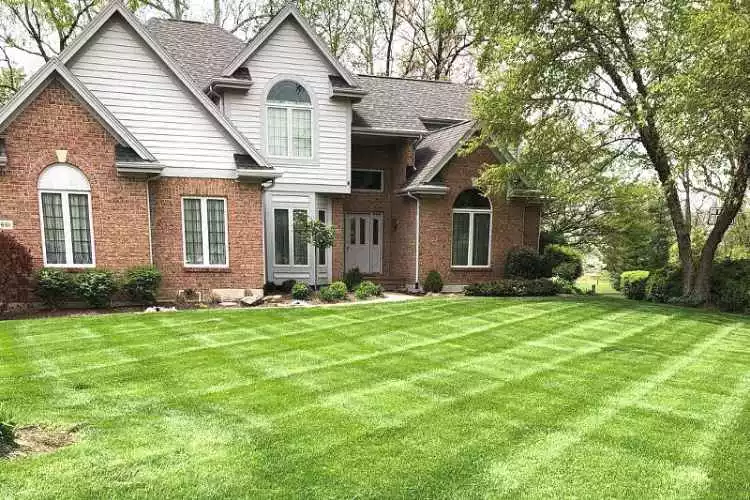
How to fix matted down grass?
To prevent matting in your lawn, it is important to implement proper lawn care practices. Avoiding heavy foot traffic on your lawn is one way to prevent matting. If foot traffic is unavoidable, consider installing a path or walkway to direct traffic away from high traffic areas.
Additionally, it is important to avoid mowing the grass too short, as longer grass blades are less likely to become matted down. Regularly aerating the soil can also help prevent matting by reducing soil compaction and promoting healthy root growth.
Lastly, keeping your lawn healthy by providing it with the proper nutrients, watering it regularly, and treating any fungal diseases or insect infestations can help prevent matting and keep your lawn looking lush and healthy. Below is the complete step by step guide on how to fix matted down grass.
1. Identify the Cause
First, consider the location of the matted down grass. If it is in an area with heavy foot traffic, such as a path or near a playground, then foot traffic is likely the cause. If the matted down grass is in a low-lying area that is frequently wet or has poor drainage, then poor soil drainage is the likely culprit. Additionally, if the matted down grass is discolored or has other signs of disease, a lawn disease may be to blame.
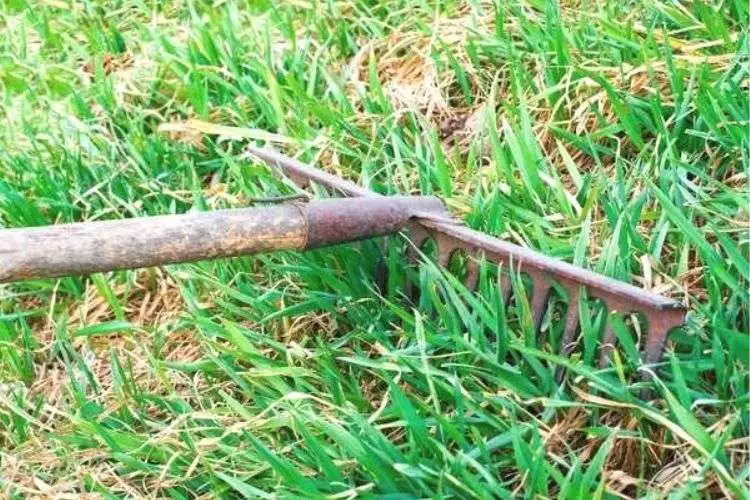
To address the issue, consider reducing foot traffic in the affected area, improving soil drainage through aerating or adding organic matter, or treating lawn diseases. By identifying the cause of the matted down grass and taking steps to address it, you can restore your lawn to a healthy and vibrant state.
To identify the cause of matted down grass in your specific situation, consider the location and appearance of the affected area. If the grass is matted down in a frequently used area, heavy foot traffic is likely the cause. If the area is frequently wet or has poor drainage, then poor soil drainage is the likely culprit.
Check for signs of discoloration or other symptoms to determine if a lawn disease is a cause. Once you have identified the cause, take steps such as reducing foot traffic, improving drainage, or treating for disease to address the issue and restore your lawn.
2. Rake and Debris Removal
Raking and removing debris is an essential first step before attempting to fix matted down grass. Debris, such as leaves, twigs, and other plant material, can prevent the grass from receiving sunlight, air, and water, hindering its growth and recovery.
Debris can trap moisture, promoting the growth of fungi and other lawn diseases that can further damage the grass. Raking and removing debris also helps to loosen and lift the matted grass, making it easier to identify and address the underlying cause. This may include reducing foot traffic, improving soil drainage, or treating lawn diseases.
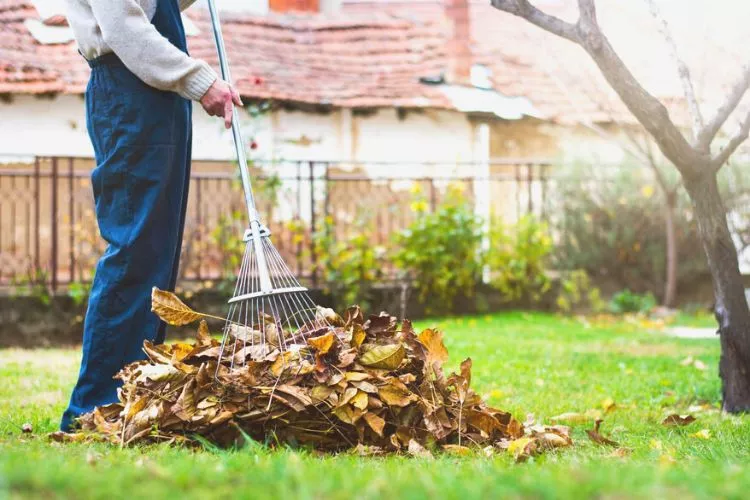
By taking the time to rake and remove debris before attempting to fix matted down the grass, you can improve the health and appearance of your lawn. This simple step can make a significant difference in the success of any efforts to restore the grass to a lush and vibrant state.
When raking and removing debris, it’s important to do so carefully to avoid causing further damage to the lawn. Start using a leaf rake or similar tool to gently remove any leaves, twigs, or other debris from the affected area. Be careful not to rake too aggressively, which can further damage the matted grass.
Once the debris is removed, use a garden hose or sprinkler to lightly water the area to help loosen the matted grass. Then, use a leaf rake or lawn mower set to a high cutting height to gently lift and fluff the grass. Be sure not to cut the grass too short or rake too aggressively, as this can further damage the grass. By raking and removing debris carefully and taking steps to avoid further damage, you can help restore your lawn’s health and vitality.
3. Aerate the Soil
Soil compaction can contribute to matted down grass by preventing proper root growth and limiting the flow of water, air, and nutrients to the grassroots. This can make the grass weaker and more susceptible to damage from heavy foot traffic or disease.
In addition, compacted soil can cause rainwater to pool on the surface, leading to poor soil drainage and waterlogging. Aerating the soil can help alleviate soil compaction by creating small holes in the soil that allow air, water, and nutrients to reach the grassroots. This promotes root growth, leading to healthier and more robust grass.
In addition, aeration can help to improve soil drainage, reducing the risk of waterlogging and lawn diseases. Overall, aerating the soil can be beneficial for maintaining healthy and vibrant grass, particularly in areas that receive heavy foot traffic or have compacted soil.
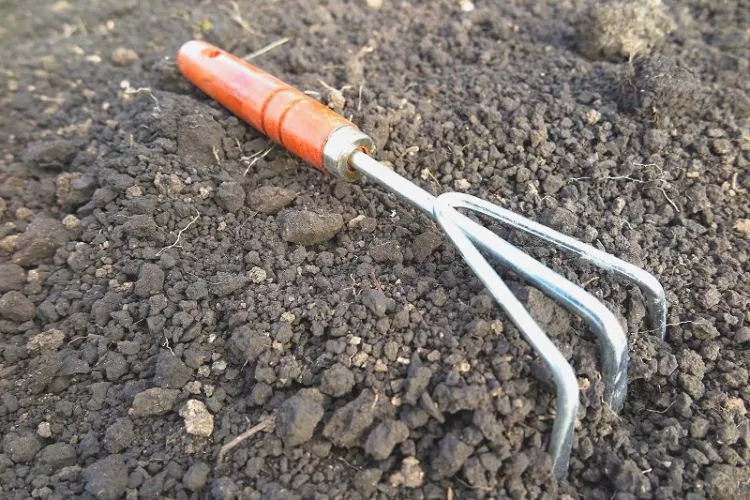
Aerating your lawn is an important task that helps to promote healthy growth by allowing air, water, and nutrients to penetrate deep into the soil. Here are some tips to properly aerate your lawn:
- Choose the right time: The best time to aerate your lawn is during the growing season when the grass is actively growing. In most areas, this is in the spring or fall.
- Prepare the lawn: Before aerating, mow the lawn to a short height and remove debris or thatch. This will help the aerator penetrate the soil more easily.
- Use the right equipment: You can use a manual or powered aerator or hire a professional. Choose the appropriate type of equipment depending on the size of your lawn.
- Aerate properly: Make multiple passes over the lawn to ensure adequate aeration. Focus on high traffic areas and compacted soil. Aerate to a 2-3 inches depth, with 2-4 inches between each hole.
- After-care: Water your lawn deeply after aerating to help the roots recover. Fertilizing the lawn after aerating can also help promote growth.
4. Fertilize and Water
Fertilizing and watering are essential for maintaining a healthy, green lawn. Proper fertilization provides the necessary nutrients for grass growth and helps to maintain soil health. Nitrogen, phosphorus, and potassium are the primary nutrients required for grass, and a balanced fertilizer can provide these in the correct proportions.
Fertilizing helps to promote deep roots and improves resistance to disease and pests. Watering is equally important, as grass requires water to survive and grow. Providing consistent and adequate water to the lawn ensures that the grass remains healthy and vibrant.
Proper watering practices encourage deep roots and help to prevent disease and pests. Overwatering can lead to shallow root growth and the development of fungal diseases. By following proper fertilization and watering practices, you can promote healthy grass growth and maintain a beautiful lawn that will be the envy of the neighborhood.
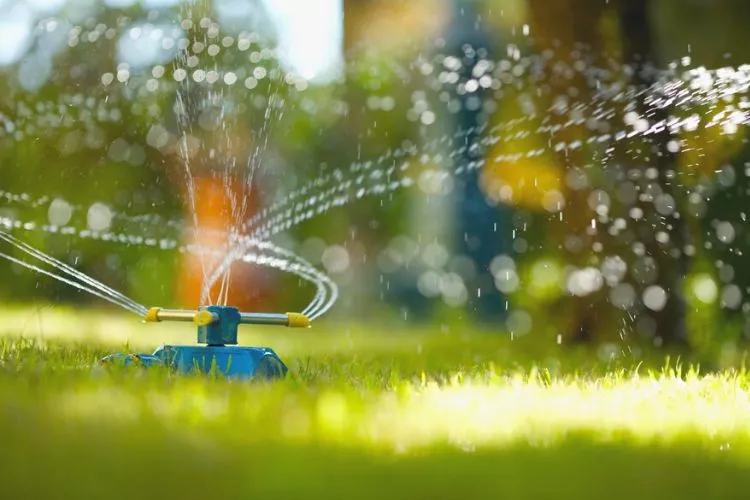
To properly fertilize and water your lawn, follow these tips:
- Fertilizing: Use a balanced fertilizer with the correct nitrogen, phosphorus, and potassium ratio. Apply in the spring and fall, and follow instructions for the application rate. Water thoroughly after application.
- Watering: Water deeply and infrequently, providing about 1 inch per week. Water in the early morning or late evening to minimize evaporation. Avoid watering during the hottest part of the day. Adjust watering according to weather conditions and the needs of your lawn.
5. Reseed or Replace
Reseeding or replacing your lawn may be necessary when the existing grass is damaged or unhealthy beyond repair. This can occur due to various reasons, such as heavy traffic, insect or disease infestations, drought, or poor soil quality. Reseeding can be an option when only certain lawn areas are affected, but the rest of the lawn is healthy.
If the damage is more widespread, replacing the entire lawn may be necessary. Additionally, if the existing grass is a poor match for the climate or soil conditions, replacing the lawn with a more suitable grass variety can be a better option. Sometimes, homeowners may choose to replace their lawns with alternative ground covers, such as mulch, gravel, or native plants, to reduce maintenance and water usage.
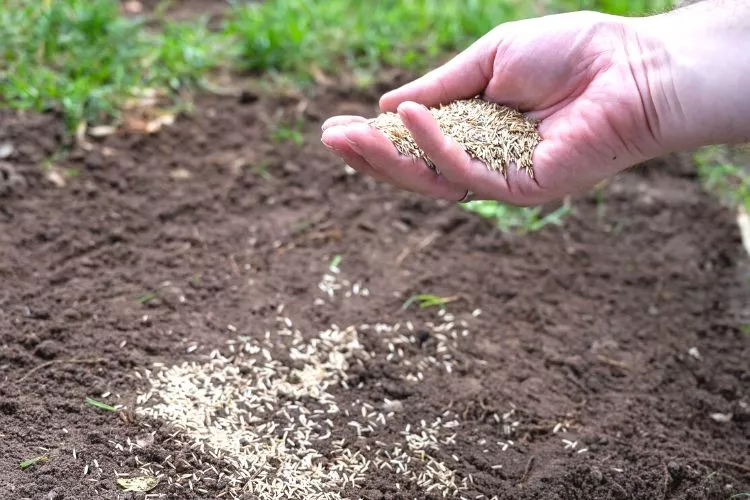
To properly reseed or replace your lawn, follow these tips:
- Reseeding: First, remove any dead grass and debris from the area. Loosen the soil to a 2-3 inches depth, and add compost or topsoil if necessary. Spread grass seed evenly over the area and lightly rake it into the soil. Water the area thoroughly, and moisten the soil until the new grass is established.
- Replacing: Remove the existing grass and debris, and loosen the soil to a depth of 4-6 inches. Add compost or topsoil to improve the soil quality. Lay down sod or grass seed and follow the manufacturer’s instructions for planting and watering. Water regularly to keep the soil moist until the new grass is established.
How to protect the lawn from heavy equipment?
Protecting a lawn from heavy equipment involves taking a few precautions to prevent damage to the grass and soil. One way to protect the lawn is by creating designated paths for the equipment, using materials like plywood or gravel to minimize the impact on the grass. It’s also important to avoid driving heavy equipment on wet or soft soil, which can lead to compaction and other damage.
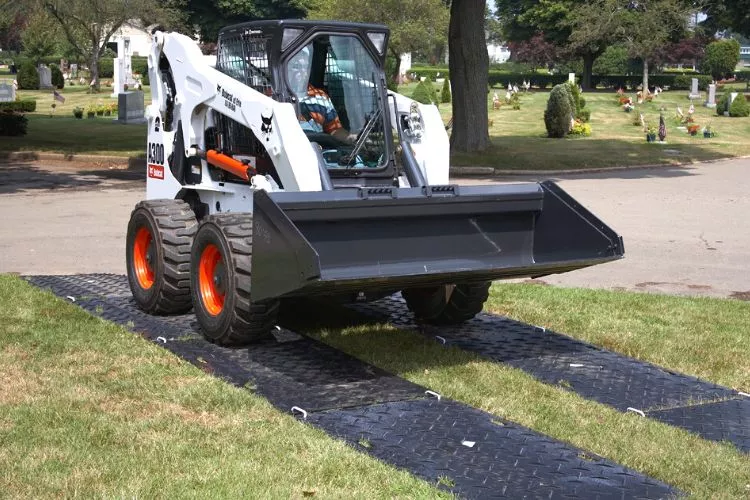
Another effective way to protect the lawn is by covering it with tarps or plastic sheeting before operating heavy equipment, which can help prevent damage caused by debris, fuel spills, or oil leaks. Finally, it’s crucial to ensure the equipment is in good working condition before use, as poorly maintained machinery can cause more damage to the lawn.
Overall, protecting a lawn from heavy equipment requires careful planning, proper maintenance, and protective measures such as designated paths or tarps to minimize potential damage.
You May Also Find Useful: Will Frost Damage Freshly Cut Grass? | Barriers To Keep Cars Off Grass
Frequently Asked Questions (FAQs)
Will matted grass grow back?
Matted grass can grow back, but reviving it may take some time and effort. In some cases, matted grass may need to be reseeded or resodded if the damage is severe. However, regularly raking and aerating the lawn can help prevent matting and promote healthy growth.
Should you rake matted grass?
It is generally a good idea to rake matted grass to promote healthy growth and prevent further damage. Raking helps to loosen the compacted grass, which allows air and nutrients to reach the roots. It’s best to rake gently and avoid pulling up large clumps of grass, which can cause additional damage.
Why is my grass brown and matted down?
Brown and matted grass can be caused by various factors, including overwatering, poor drainage, disease, or insect infestation. Sometimes, it may also be due to environmental factors such as drought or extreme heat. It’s important to identify the underlying cause and take appropriate steps to address the issue, such as adjusting watering or fertilization practices, improving drainage, or treating pests or diseases.
Conclusion:
In conclusion, matted down grass can be a frustrating problem for homeowners, but there are several effective ways to fix it. Regular raking and aerating can help prevent matting and promote healthy growth, while dethatching and overseeding can be effective for more severe cases.
It’s also important to address underlying issues such as overwatering, poor drainage, or disease to prevent further damage. By taking proactive steps to care for your lawn and address matting as soon as it appears, you can help ensure a healthy, lush, and beautiful lawn year-round and I hope this guide regarding how to fix matted down grass has been helpful.

